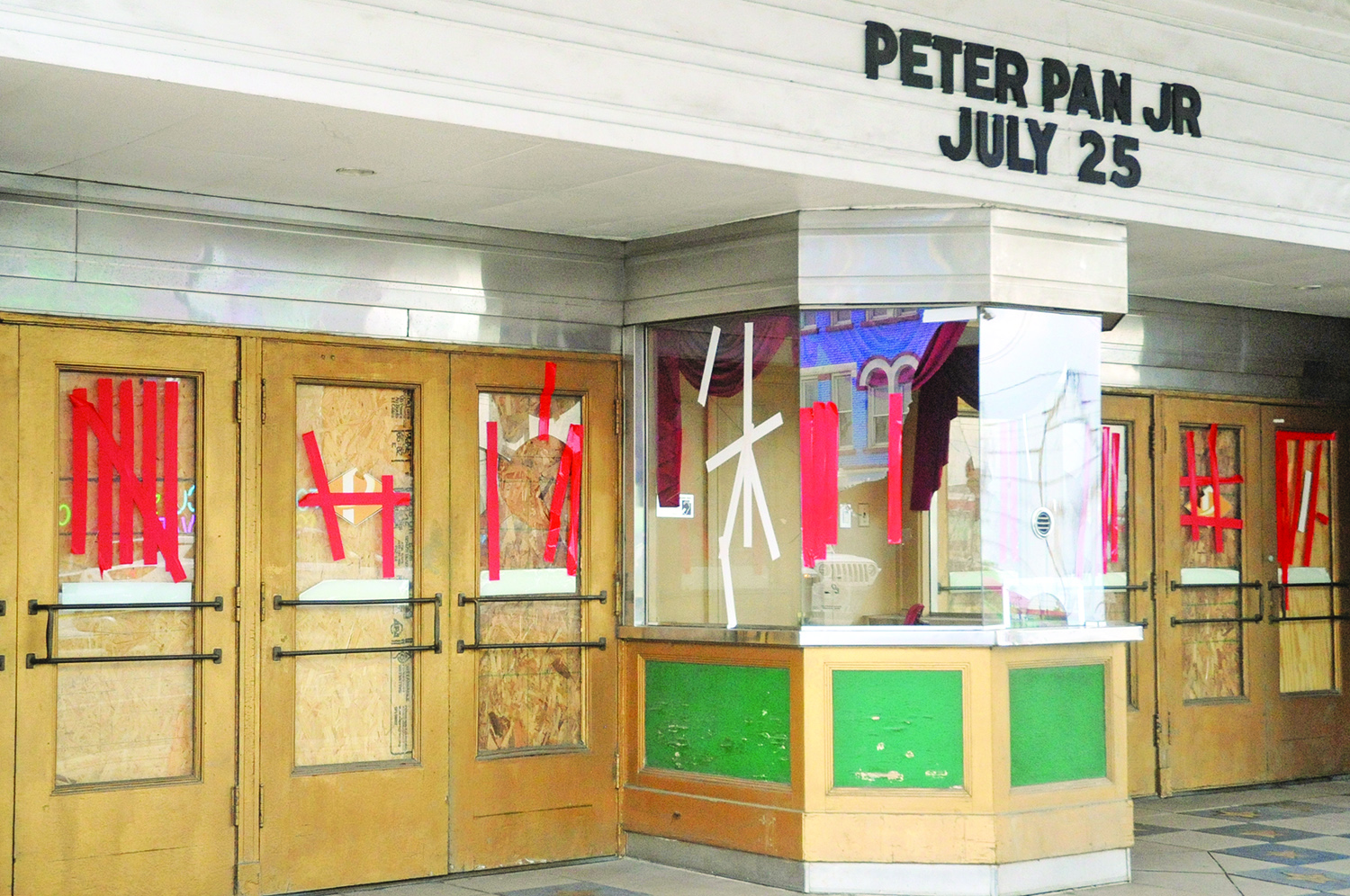Seeing Red: A look at Ironton’s financial situation
Published 12:00 am Sunday, November 14, 2004
Ironton voters spoke clearly at the polls last week, leaving city leaders to wonder if residents have been listening.
For months, and some would say years, city leaders and its residents have been talking about the city’s financial problems stemming from the decline of a local tax base and lack of growth. Last Tuesday, voters resoundingly defeated by a 3-1 margin a half percent income tax increase that would have helped out of the ever growing sea of red that threatens to overtake the city’s dwindling budget.
Voters also opted to nix the floodwall levy, thus leaving another $150,000 hole to fill.
Trending
Ask city finance director Cindy Anderson how bad the finances are and she will give you a quick answer.
"They are bad. We are not bankrupt yet, but it is coming," Anderson, who is not known for exaggeration or hyperbole, said matter-of-factly. "The bottom line is, as much as I am uncomfortable with it, we may make it through 2005 but not even be able to start 2006."
What’s the problem?
In simplest terms, the city of Ironton has been forced to live beyond its means.
The city spends more than $500,000 more than it brings in each year to maintain the level of services that people have grown accustomed. Fortunately, some unexpected one-time revenues from sale of property and state funding gave the city healthy carryover to work with in recent years. Those days may be past.
That carryover is getting smaller and smaller and could be all but gone by the end of 2005, according to Mayor John Elam.
Trending
At the end of 2002, the city had $836,981 in carryover balance. According to the current budget, the city will end 2004 with $315,603. Preliminary projections call for the carryover at the end of 2005 to be only $300, although Anderson is quick to point out that these are conservative estimates that only include a portion of the property tax the city will receive.
Regardless, she said it is a real possibility that the city could end 2005 with as little as $25,000. That may sound like a lot but is small change for a city that has a general fund budget of $4.2 million this year.
In her 17 years with the city, has Anderson ever seen the financial coffers sink that low?
"Never," she said. "It is just from the fact that we have lost all of our tax revenue."
More than 90 percent of the general fund budget goes towards salary and benefits. Operating expenses such as health insurance, worker’s compensation, fuel, electricity and natural gas continue to rise while the city’s revenues have stayed flat or diminished.
"What has happened in the last decade is that the mass exodus from Ironton has caught up with us," Elam said. "We have come to a crossroads where we are going to have to forego services or pay for them."
The mayor emphasized that the city is not in this situation because of excess spending and has actually managed to maintain services with a 10 percent reduced workforce that cannot be cut much deeper.
"We have a very good, dedicated workforce that is willing to overcome the challenges of doing more with less," Elam said. "We are at the point now we will have to start doing less with less."
Though the facts paint a bleak picture, city leaders do believe there is hope.
Economic Development
Everyone talks about economic development as being the key to Ironton’s future. While it is undeniably crucial, Anderson and the Mayor are both quick to explain that the city’s financial problems run too deep.
To put it in perspective, it would take $60 million worth of company payroll for the city to generate the $600,000 needed for a balanced budget. That would be 3,000 jobs that paid $20,000 each.
"We are not going to bring 3,000 jobs. We didn’t lose 3,000 jobs," the finance director said. "There is not a quick fix to this, not an easy fix."
Mayor Elam agrees that it will take a combination of factors to fix the problem but said he is excited about the possibilities of bringing new businesses to town through entities like the Ironton Port Authority which is working with no less than five prospective new businesses interested in Ironton.
"We are positioning ourselves to become self sufficient again. It took a decade for us to suffer those losses so I am sure it will take time for revitalization," Elam said. "We are working hard every day."
That may be a good thing because it seems the need for more fees or revenue surfaces nearly every day as well.
Hits keep coming
Just because the income tax increase was defeated and the $10 fee in its various incarnations is dead for now, that does not mean residents should think that their pocket books are safe.
Most city leaders agree that some fee increases are on the horizon to address issues other than the general fund including a sewer rate increase, stormwater utility fee, lack of floodwall levy and a water rate hike.
First and foremost, a sewer rate increase is already on the agenda for next week. The enterprise fund that is supposed to be self sufficient is spending $120,000 more than it generates but has been fortunate to have a carryover.
The proposed plan would increase the city’s sewer rate by $1.45 per thousand gallons over the next three years, bringing the total cost to $5.50 per thousand.
Another looming financial monkey on Ironton back is the storm water utility fee that officials believe is needed to develop the Environmental Protection Agency’s unfunded mandate for a Combined Sewer Overflow plan. The plan will determine the volume of pollutants that go into the Ohio River and how to minimize untreated discharges.
Developing the plan by December 2005 is projected to cost the city more than $860,000. Actually implementing it could cost the city $20 million over the next 20 years. Past projections for a fee ranged from between $7.50 and $15 per month but it could be more or less depending on the specifics.
The recent defeat of the floodwall levy that had passed for at least the past 15 years just adds fuels to the financial fire. This loss of revenue will make it more difficult for the city to maintain its floodwall systems and pump stations that protect the city.
"Any of those who remember the '37 flood or have seen the devastation can recount the tragedies that it caused," Elam said. "We don't want to return there."
Councilman Jesse Roberts agrees that this is a concern that the city will now have to face.
"From a holistic view, I think there are a lot of things facing the city but I also think that a city that votes down a replacement floodwall levy does not have the best interests at heart," he said. "How can you vote this down?
"If we need to raise a fee for a concrete reason that is fine. I can’t see passing a $10 fee just because the citizens won’t pass an income tax increase. Why would we ask for more money when we still haven’t seen a plan where it is going? And don’t just say to balance the budget, I can see that, but where else will it go?"
Another hit that is on the horizon is a water rate increase. Currently, the fund is spending $175,000 more than it brings in.
This summer a proposed plan called for an increase of 25 cents per 1,000 gallons starting in July, another 10 cents in 2005 and an additional 5 cents per 1,000 gallons each year for 2006-2008. That idea was scrapped at the time until it could be investigated more.
With all the bills piling up on the residents, city leaders know how important it is to find a solution quickly.
What’s the answer?
So, where does the answer lie? It depends who you ask.
One step has already been put into action but it may take a while before the city starts to feel the effects. In September, Council adopted a 50 percent reduction to the city’s reciprocity agreement that addresses how much Ironton residents working in other municipalities with income taxes pay. The plan will generate approximately $320,000 in a full year but the bulk of the monies will not be seen until 2006.
For Anderson, the best plan just died at the polls last Tuesday.
"The only true fix is what the citizens voted down - an income tax increase – because it grows as the revenue and the tax base grows," she said. "A fee is fixed so it is a short-term fix not a long term fix. In five years, council will be back asking the residents for more."
As far as cuts go, Elam believes that they have cut as far as possible and that the only area that could be cut to generate the needed revenue would be police and fire departments. He said that is not an option that he considers viable to the city’s future.
Though it has been voted down at least three times in recent months, some form of municipal fee could resurface.
As far as Roberts and fellow councilman Brent Pyles are concerned, more steps need to be taken to get the city in order, to operate efficiently and see what happens.
"I just can’t throw money at the problem to remain the same. I can’t justify that if the system is not working," Robert said. "I am not saying the men and women of Ironton are not working, I just don’t think we are managing our biggest assets to the fullest extent."
Pyles agrees that the self-assessment has to continue during this "very critical juncture," since the citizens have given a clear signal that they want services but are not willing to finance them.
One of the most important things the city must do is start to be proactive instead of reactive to think towards the future and show the residents that positive things are on the horizon, he said.
"Obviously, we can’t go back and change things that have happened in the past," Pyles said. "I think what we do today, tomorrow and points beyond will be what makes a difference for the city."
And like a sunset on the horizon, the red awaits somewhere off in those points beyond. How far off will be the big question.





